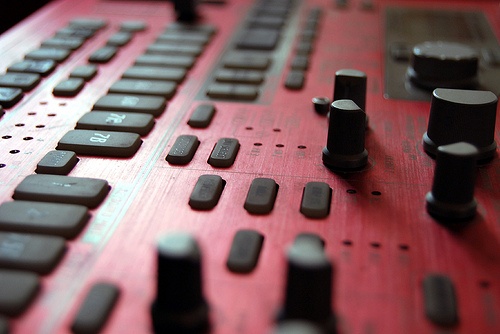Synthesizers, computers, and other hardware produce incredible results for electronic musicians, but some of the most creative professionals in this genre broaden their horizons to include found sounds. While it might seem unconventional, modern musicians weave found sounds with more traditional music production to create cohesive songs that resonate on multiple levels.
Found Sound: From Human to Environmental

Image via Flickr by Gerrit Schirmer
In electronic music, found sound involves interspersing clips of non-musical sounds into an otherwise musical song. Sometimes, musicians use human-made found sounds, such as the staccato beats of hands clapping or the lulling, hypnotic sound of humming.
Electronic musicians also use environmental sounds in the recording studio. The sound of wind whistling through the trees, water rushing over rocks, or rain pelting a tin roof can all enhance a recording. During music production, the artist can stretch or compress the recording, infuse it with other sounds, or otherwise alter it to his or her liking.
The Evolution of Musique Concrète
Musique concrète evolved in the 1940s, allowing artists to infuse their recordings with non-traditional sounds that mimicked the rhythm, harmony, tone, or other quality of a musical instrument. In those days, musique concrète involved now-archaic technology like shellac record players and recorders.
Today, however, electronic musicians who employ found sounds use more sophisticated equipment to capture the mood or emotion they wish to convey. For example, in the single “You” on his album “Lucky Shiner,” Gold Panda uses found sounds like fireworks, recordings of Mexican music, his own beat-boxing, and children’s laughter.
From Mundane to Significant
Electronic musician Shlohmo used the ambient sounds he recorded in his bedroom for a significant portion of his song “Anywhere But Here.” Similarly, composer Daniele Sciolla records environmental sounds at the beach and other venues to create moody, atmospheric tracks.
Other musicians, such as Matmos and The Books, employ more human sounds, such as the swish of a brush pulled through hair or the excited chattering of enthusiastic children. In other cases, artists cadge sound bites from old recordings, such as the buzzer used during a game show or snippets from records that now reside in the public domain.
Manipulating Found Sounds
After discovering found sounds, musicians retreat to the studio and work with a recording engineer and other professionals to manipulate the sounds to suit their music. Popular electronic musician Donna Hewitt, for example, translated her work with found sounds to live performances with the invention of the eMic.
She still uses traditional found sounds, such as the noise created by people dancing. However, she also incorporates live vocal processing to edgy and unique results.
Other musicians transform non-musical objects into instruments for an alternate form of manipulation. For instance, New York City-based band Anamanaguchi turned video game systems into instruments for their song “Endless Fantasy.” Found sounds continue to increase in popularity because of their ability to transform traditional tracks into awe-inducing works of art.
Interested in using found sounds in your own recordings? Contact The Carriage House to work with our Grammy award-winning staff in a comfortable, off-the-beaten-path studio with all the amenities you need to leverage your talent.
![]()

Brian Eno made it mainstream, Peter Gabriel set it to film, but Boards Of Canada made it really cool–and beyond just found sounds and “period instruments”, but by capturing the sensibilities of past musical conventions among snapshots of society and culture. They succeeded in creating a new “neo-retro” genre–memory music–with a devoted audience, alongside an army of like-minded contemporaries rooting out obscure recordings and adapting and treating them: Tycho, Ten And Tracer, Deru, Freescha, Miles Tilmann, Kettel, Robert Henke…
A lo-fi mode of music-making that elicits our earliest memories.